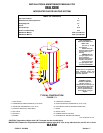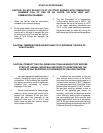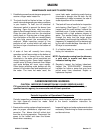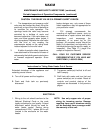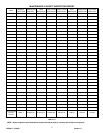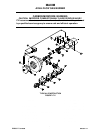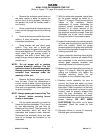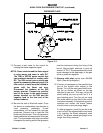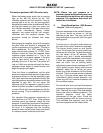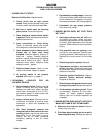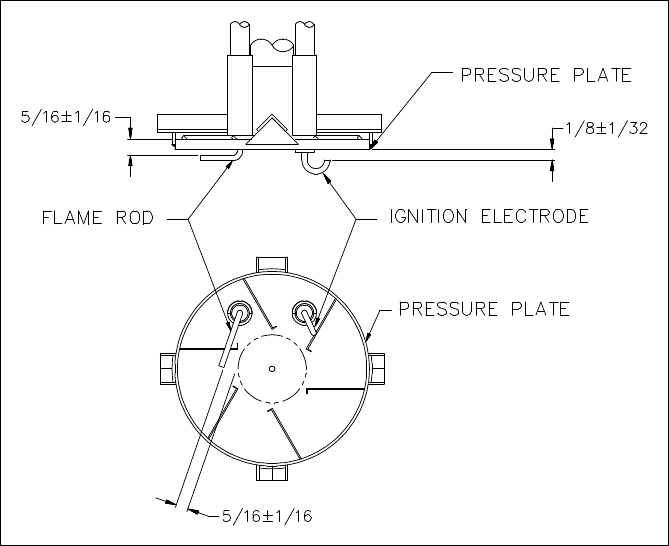
PV500-17 05-2000 Section 17
8
MAXIM
AXIAL FLOW GAS BURNER START-UP (continued)
PRESSURE PLATE
Set up and Tolerances
Figure 17-3
13. Connect a test meter to the control for
reading the flame response signal.
NOTE: Some controls read the flame signal
in micro amps and some in volts DC.
The TFM or MC120 series control has
two terminals marked for reading volts
DC. The S89 control uses a micro amp
signal for measuring flame strength. For
this control, a meter must be hooked in
series with the flame rod wire.
Disconnect the leadwire at the S89
sensor terminal. Connect the positive
lead of the meter to the quick-connect
sensor terminal on the S89 and the
negative lead to the free end of the
sensor leadwire.
14. Be sure the tank is filled with water. Once
the burner is reassembled, two devices to
read pressure, preferably U-tube
manometers, will be needed to read gas
pressures. Connect one to read the inlet
pressure of the burner. This is the pressure
measured before all components in the gas
train. The manometer must stay connected
throughout the testing as the inlet pressure
must be monitored during the firing of the
burner. Record static pressure; it must not
exceed 14" W.C. Pressures above this could
cause damage to the diaphragm in the gas
valve or pressure regulator.
15. Burners with pilot; inputs over 400,000
Btu/h (See wiring diagram.)
16. Connect a manometer to the manifold test
port at the shutoff valve closest to the
burner. Turn off the main gas shutoff valve.
Set the air shutter as shown on the tag
attached to gas train. This may not be the
exact setting you end up with, but it is a
good starting point. Turn the unit on using
the rocker switch on the side of the control
enclosure assembly. If the operating control
switches are closed, the burner blower
should come on and pre-purge begin.
If nothing happens, check the control to be
sure it is not in the tripped position and reset
it by pushing the flame safeguard reset
button. The burner should pre-purge for no
longer than thirty seconds.



